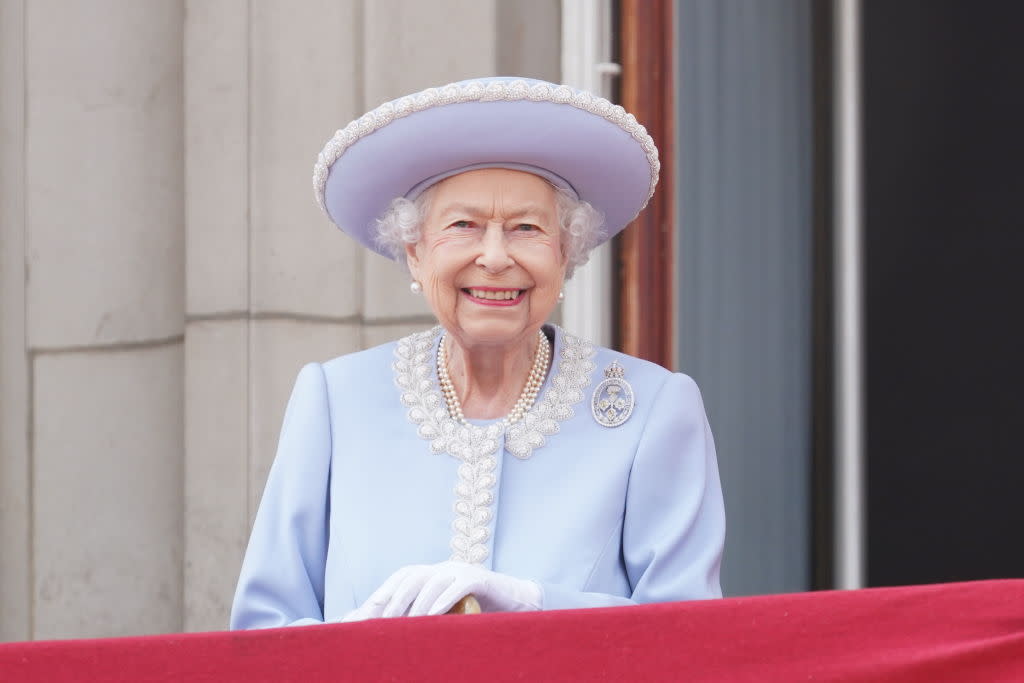As Queen Elizabeth II Marks Her Platinum Jubilee, Who Is the Longest Reigning Monarch?

- Oops!Something went wrong.Please try again later.
- Oops!Something went wrong.Please try again later.
- Oops!Something went wrong.Please try again later.
- Oops!Something went wrong.Please try again later.
Queen Elizabeth II watches from the balcony of Buckingham Palace during the Trooping the Colour parade the Trooping the Colour parade on June 2, 2022, in London, England. Credit - Jonathan Brady/ WPA Pool—Getty Images
This week, the U.K. is celebrating Queen Elizabeth II’s Platinum Jubilee, marking 70 years on the throne. She rose to the throne in 1952 at the age of 25 upon the death of her father King George VI. Per TIME’s Feb. 18, 1952, story on the transition of power, “as British officers, for the first time in 51 years, directed their wardroom and regimental toasts ‘to the Queen’ instead of ‘to the King,’ Britons felt in their bones that Elizabeth will be good for them.” In her honor, there will be numerous celebrations and a four-day bank holiday from June 2 to June 5.
“She’s become the longest-reigning monarch in British and Commonwealth history,” as Carolyn Harris, historian and author of Raising Royalty: 1000 Years of Royal Parenting, puts this milestone in context. The previous record-holder was Queen Elizabeth’s great-great grandmother Queen Victoria, who ruled for about 64 years from 1837 to 1901 and was known for being a trendsetter, popularizing everything from white wedding dresses to photography.
The world’s longest reigning monarchs
The Platinum Jubilee takes on even more significance considering her longevity among all royals worldwide. Queen Elizabeth is the world’s third longest ruling monarch, at least in modern history. She is two years away from becoming the longest reigning monarch in Europe. The current record-holder for longest-reigning monarch is French King Louis XIV, who ruled as an absolute monarch for approximately 72 years from 1643-1715, beginning when he was about four years old. Based out of his palace in Versailles, he engaged in three wars and was a staunch patron of the arts, supporting writers like Molière during a period nicknamed “Le Grand Siècle” “the Great Century.”
After Louis XIV, the next longest reigning monarch is Thailand’s King Bhumibol Adulyadej (Rama IX), who was on the throne for about 70 years from 1946 until his death in 2016. “Our strength lies in our nationalistic feeling,” King Buhumibol told TIME in a May 27, 1966, cover story in which the magazine reported that “The men who run Thailand are well aware that their youthful King is their—and the nation’s—greatest living asset.” A multi-billionaire, he was also known as one of the world’s richest royals. The Council on Foreign Relations says Bhumibol’s “greatest achievement” was placing the monarchy “at the center of Thai politics and culture,” and making it “an important mediator of political disputes.”
Franz Joseph I was another notable long-reigning monarch. He ruled Austria for about 68 years from 1848 to 1916, passing away in the middle of World War I. During his reign, Austria and Hungary became a joint empire, and he served as Austria’s emperor and Hungary’s King. In 1914, he issued an ultimatum to Serbia that catalyzed World War I.
Read More: Parades, Pageants, and Afternoon Tea: The History of Britain’s Royal Jubilee Celebrations
Long may she reign
Long-reigning monarchs can abdicate the throne, though it’s rare. In 2014, Spanish king Juan Carlos handed over the throne to his son Felipe VI after 39 years, following financial scandals. But British monarchs don’t often abdicate. That’s because of the type of coronation ceremony they participate in, Harris argues.
“For Felipe VI, that was a secular installation of a head of state rather than a religious coronation. For Queen Elizabeth, it was a religious coronation ceremony, and so that very clearly married her to the role for life,” says Harris. “So we have seen abdications elsewhere—in Belgium, the Netherlands and Spain and Qatar, as well in the Middle East—but it’s not something we’re likely to see in the United Kingdom.”
One exception was in 1936, when King Edward VIII abdicated so he could marry American divorcée Wallis Simpson. That decision put Queen Elizabeth’s father on the throne, resulting in her becoming monarch after his death.
Read More: Here’s Why Queen Elizabeth II Has Two Birthdays
Queen Elizabeth‘s successor, her oldest son Prince Charles, is not likely to reign for nearly as long as she does. Charles is already 73—having been born just three years before she ascended to the throne.
To Harris, the Queen’s Platinum Jubilee marks an opportunity to celebrate the stability of the British monarchy. She has met 13 U.S. Presidents and overseen 14 British Prime Ministers. “When you have a 70-year reign, there’s that opportunity to reflect on the political, social and cultural change over time and the Queen’s role as a figure of continuity during periods where otherwise there’s been a tremendous amount of change,” Harris says.

